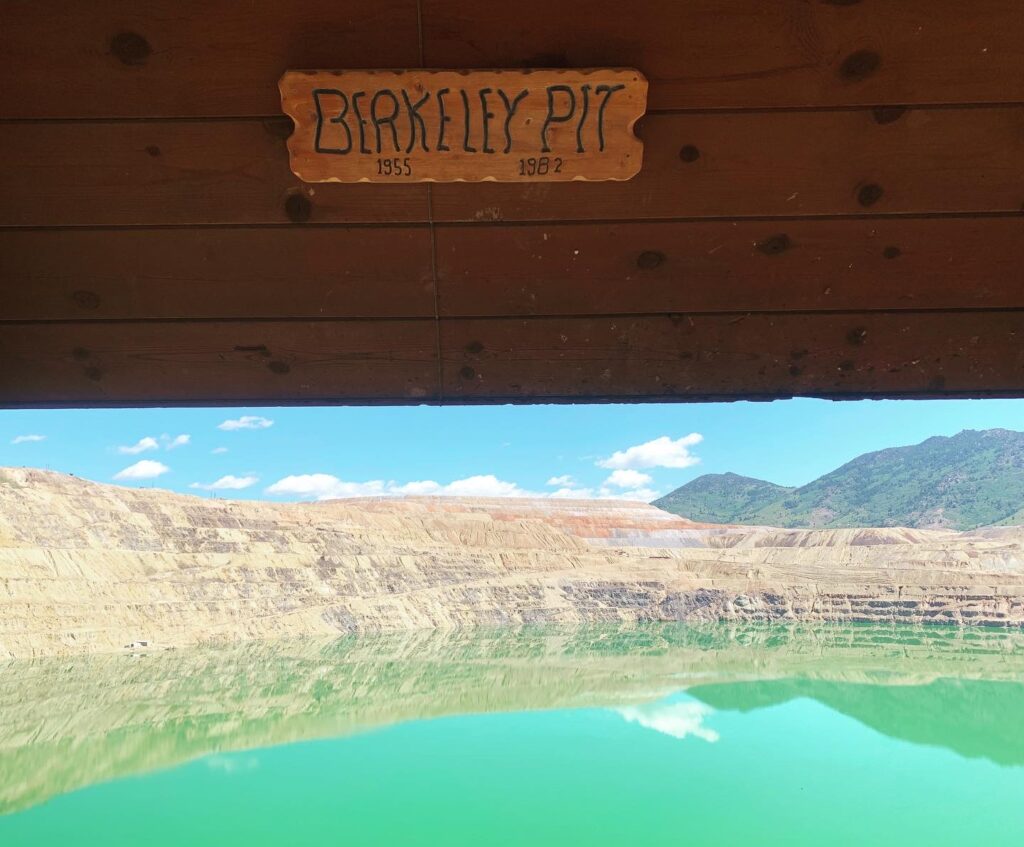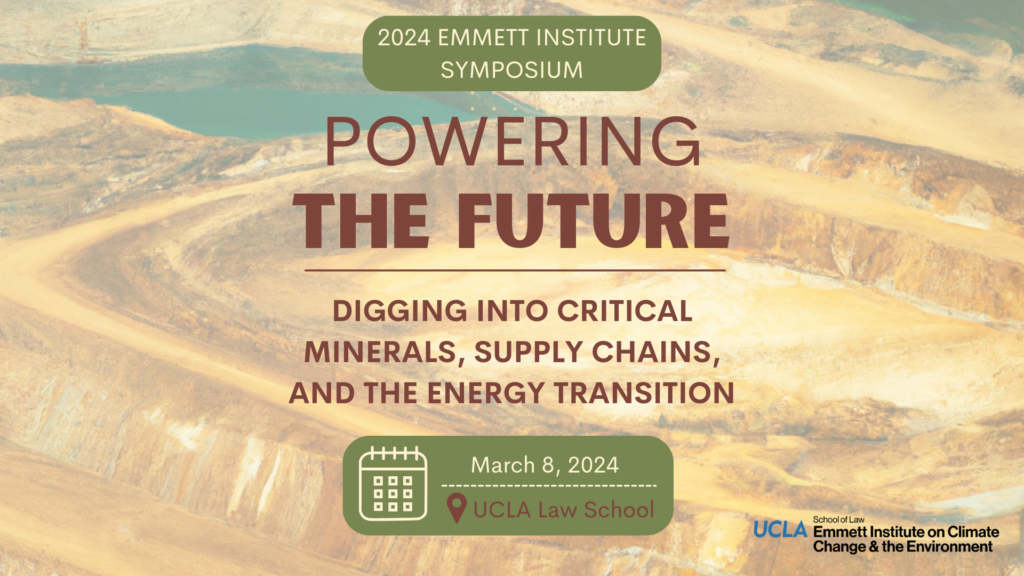Emmett Institute Symposium: Powering the Future
This is a critical moment in the energy transition for plotting the course of mineral extraction, with communities and the environment in mind.

If you ever find yourself passing through southwest Montana, go visit the Berkeley Pit and contemplate resource extraction. You pay a couple bucks to a guy in a trailer; walk under some razor wire and through a long, disorienting white tunnel; then stand and stare out at the most beautiful turquoise sea of toxic water. You’re looking at 50 billion gallons of water laced with arsenic, zinc, lead and copper. This water is about as acidic as stomach acid and so dangerous to wildlife that an electronic siren goes off every few minutes to shoo birds from landing in it and dying. This world-famous Superfund site is the result of an open pit copper mine from the 1950s on the edge of Butte, Montana.
The man-made disaster that is the Berkeley Pit is a good reminder of the need to regulate the extraction of Earth’s raw materials. I’ve been thinking about the Berkeley Pit a lot lately as I’ve noticed growing attention in climate journalism and policy circles to one of the big policy hurdles for the clean energy transition: How will the U.S. pursue this new mining boom without repeating the mistakes of the past? Lithium, nickel, cobalt, and many other minerals are essential to the technologies that will move us off fossil fuels. So, how can policymakers spur the kind of domestic mineral supply chain that is needed while protecting local ecosystems and vulnerable communities?
This debate is the topic of the 2024 spring symposium hosted by the Emmett Institute on Climate Change and the Environment on March 8 at UCLA School of Law. “Powering the Future: Digging into Critical Minerals, Supply Chains, and the Energy Transition” will bring together engineers, lawyers, and policymakers to confront the various legal issues surrounding critical minerals. The keynote speaker is Christina Snider-Ashtari, the Tribal Affairs Secretary for California. The link to RSVP is here.

Among these issues is how to rapidly create domestic supply chains for critical minerals, whether it’s gallium for solar panels; manganese in EV batteries; or aluminum needed for wind turbines. Two years ago, the Biden administration passed historic climate laws that invest heavily in clean energy. Part of that legislation is an emphasis on boosting U.S. manufacturing. Done right, countries can use competition to accelerate the clean energy transition; done wrong, global tensions can spiral out of control. Start-up tech firms in the U.S. are racing to transform the industry, to break up China’s grip on rare earths refining, as Reuters reports.
We’ll explore all this in three expert panels. Faculty Co-Director William Boyd will lead the day’s first panel introducing important themes, including the rise of resource nationalism. Alex Wang, also a Faculty Co-Director of the Emmett Institute, will moderate a panel discussion about the geopolitics of mineral supply chains. A third panel moderated by Juan Pablo Escudero, a staff attorney at the Emmett Institute, will explore the impacts on historically disadvantaged communities. We’ll post more here in coming weeks about each of these themes. Today, I offer a roundup of just how dynamic the reporting around critical minerals has become.
Some of the most committed opponents of mining operations have been Indigenous tribes and community groups due to the crowding of sacred sites and risk of environmental harms. One such legal fight is over the Thacker Pass lithium mine in Nevada near the Oregon line. But there is opposition bubbling up in all sorts of communities across the country where mining operations are seeking permits. That includes in rural Minnesota where locals are divided over “green nickel” as MIT Technology reports in this (highly recommended) special series.
The future of the nickel industry is a key issue in next week’s presidential election… in Indonesia. As Climate Home News reports, Indonesia is the world’s largest nickel producer and is betting on the rapidly growing EV battery sector to help power its economic development. But there too it’s sparked conflict.
Closer to home, a big concern is water. The World Resources Institute recently found that at least 16% of the world’s land-based critical mineral mines, deposits and districts are “located in areas already facing high or extremely high levels of water stress.” Lithium processing is particularly water-intensive but most mineral operations require lots of the wet stuff for separating minerals, controlling dust, and cooling heated machinery. All of this means that increased mining risks making already dry regions more vulnerable.
Which begs the question: Can dry states in the U.S. Southwest afford to become home to large mining operations that will gulp hundreds of thousands of acre feet of groundwater from the Colorado River? Staring down the effects of climate change, can we afford not to, and risk delaying a domestic supply of minerals? Mine claims are stacking up in Utah, Nevada, and Arizona, as Inside Climate News reports. In California’s Lithium Valley, an Australian firm recently broke ground on a major new lithium extraction and geothermal power plant facility. As the Desert Sun reports, construction is getting underway despite the threat of litigation by community members who hope to still influence the project. It’s the first of what could be many such facilities for the area, which brings economic opportunities as well as environmental justice concerns.
Partly because of this tension between the values of environmentalism and resource capitalism, the mining industry is even facing a workforce crisis. Grist reports on this trend of younger people not pursuing careers that support mineral extraction. Our symposium on March 8 will discuss ways to address this tension, and lessen the environmental and community harms associated with mineral extraction, so that the clean energy boom is, well, as clean as possible. See you there.
Reader Comments
One Reply to “Emmett Institute Symposium: Powering the Future”
Comments are closed.







Regulation and compliance enforcement is the only way to protect naturaL resources such as this- of course when regulations or enforcement is so obviously inadequate it invites monkey wrenching and other actions.